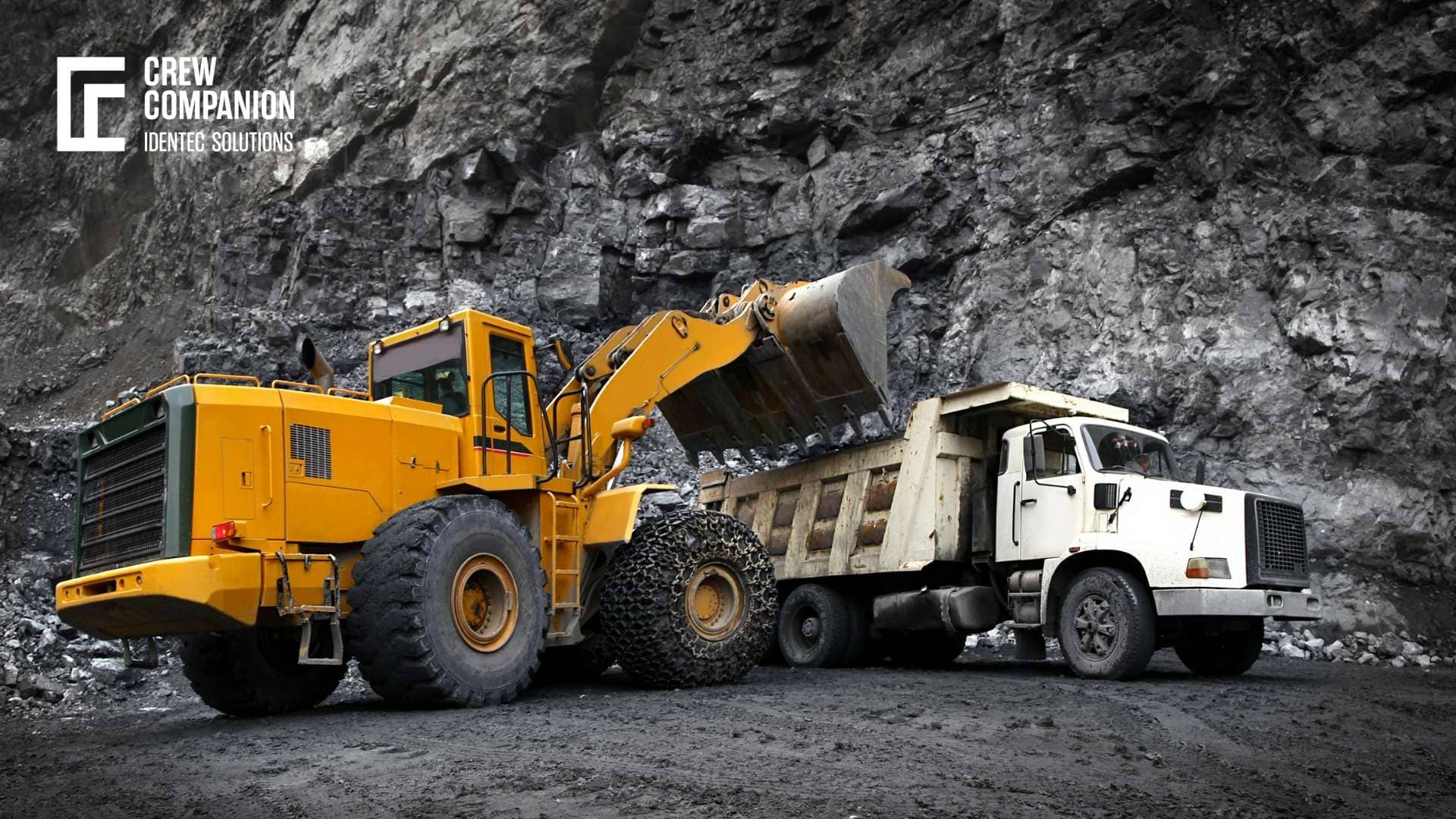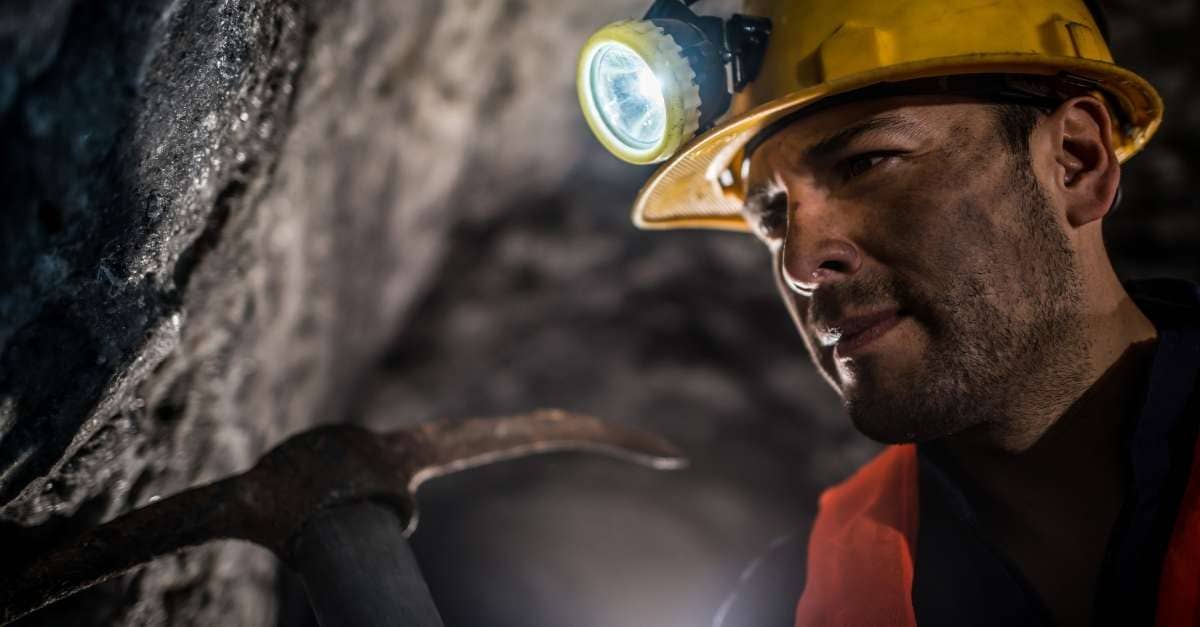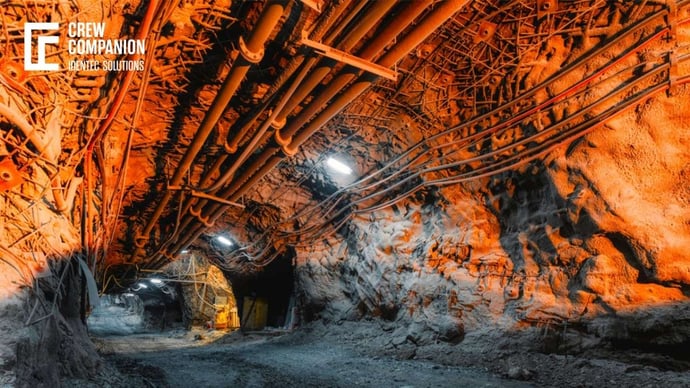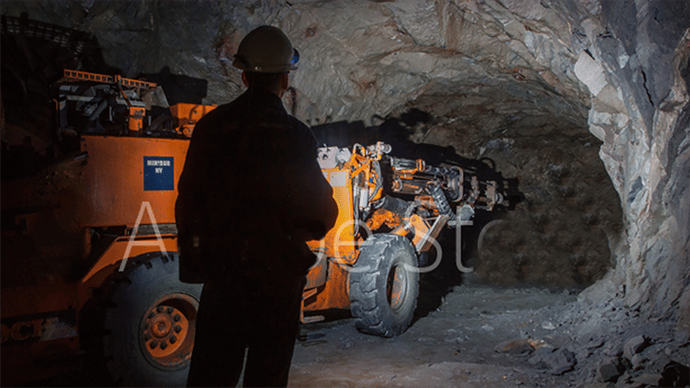RFID in mining: The many use cases of a proven technology
| Written by Mark Buzinkay

No video selected
Select a video type in the sidebar.
RFID technology is used in various ways in the mining industry to improve efficiency and profits. One way RFID is used is to track the location of equipment. This helps to reduce delays caused by human error, as well as optimize activities for greater profit. Another way RFID is used in the mining industry is to track the status of maintenance and repairs. This allows mining companies to schedule downtime better and avoid costly delays. Finally, RFID is also used to monitor safety conditions in mines to ensure that miners are working in safe conditions and can quickly respond to any potential hazards. Overall, RFID technology is a valuable tool for the mining industry (see also our post about mine productivity).
WHY is RFID IN MINING a good idea?
The mining industry is one of the most hazardous industries to work in. Workers face many hazards on a daily basis, including exposure to toxic chemicals, heavy machinery, and falling debris. In recent years, the industry has been looking for ways to improve worker safety. One way that mining companies are doing this is by implementing RFID technology.
RFID stands for "radio frequency identification." This technology uses radio waves to identify and track objects. RFID tags can be attached to equipment, vehicles, or even people. When an RFID reader scans the tag, it can collect information about the object that it is attached.
Mining companies are using RFID tags to track equipment and vehicles. This helps them to keep track of where their assets are, and it also helps them to prevent theft. In addition, RFID tags can be used to monitor equipment maintenance. Mining companies can minimize downtime and keep their operations running smoothly by tracking when equipment is due for servicing.
RFID technology is still relatively new but has already proven valuable for the mining industry. As this technology continues to evolve, even more uses will likely be found in the mining industry.
RFID IN MINING: USE CASES
Controlling access to mine sites: RFID can control access to mine sites. By tagging employees' ID badges with RFID tags, companies can track which employees enter and exit the site. This information can be used to improve safety by ensuring that only authorized personnel are on site.
Logistic distribution of supplies: RFID tags have many benefits over other tracking methods, such as barcodes. For example, they are more durable, can withstand harsh conditions, do not require a line of sight to be read, and can store more data than barcodes. This makes them ideal for tracking products in the mining industry.
RFID tags can provide a wide range of information about the products they are affixed to, making them ideal for tracking in the mining industry. There are two main ways that RFID tags are being used in mining operations:
- Open circuit: The mining operation reuses the same RFID tag that the supplier uses to track the products inside the mine.
- Closed circuit: The mining company puts new RFID tags on the products distributed in the mine environment. This allows them to track the products easily and prevents mix-ups.
In open circuit supply logistics distribution, the supplies labelled by the provider are received at the general warehouse and will be distributed to areal warehouses from this building. Later on, it is possible to further redistribute the labelled supplies to other surface or underground warehouses. There are many benefits of using RFID in mining supply logistics. For example, it can help improve inventory accuracy and visibility while reducing labour costs. In addition, RFID can also help reduce losses due to theft or damage.
Tracking personnel: RFID tags are used in the mining industry for people localization, as each worker is given an RFID tag. The RFID readers are located at strategic points throughout the mine, such as the main entrance and level entrances. In drifts or ramps of an underground mine, the antennas are located based on readers' range and spacing. The goal is to decrease the personal location uncertainty areas. This allows the rescue and first aid teams to know exactly where everyone is in case of an emergency.
Further reading about miner tracking
Evacuation and rescue: Safety is of the utmost importance in underground mining. In the event of an accident, every second counts in terms of rescue and recovery. Radio frequency identification (RFID) technology plays an increasingly important role in helping to keep miners safe. It is vital monitoring miners to know each worker's exact location and where the rescue and first aid teams are.
In an accident, RFID can help first responders locate individuals who may be trapped. It is possible to activate alarms immediately and implement evacuation protocols, monitor and guide rescue teams, do the same with workers, conduct them to safe places or operating lifts, stop truck traffic, and stop works affected directly or indirectly by accident.
This system has proved very effective in ensuring the safety of mine workers. In one instance, a worker who was injured and unable to move was quickly found and rescued by using this system.
Managing explosives: RFID can also be used to track the location of explosives in a mine. This information can improve safety by ensuring that explosives are only used when and where they are supposed to be.
Detection areas: RFID is used in the mining industry for proximity warning systems. These systems use RFID tags to track the location of workers and equipment and then warn the vehicle driver if someone or something is in his proximity. This helps prevent accidents by ensuring the driver is aware of his surroundings. These systems can also be used to track the location of assets and inventory, which can help improve efficiency and productivity in the mining industry.
To do this, an RFID tag and an antenna must be placed on the vehicle. This will act as a radar system, informing the driver to avoid a collision or unsafe situations. In addition, the RFID reader on the truck emits sound and light to warn about the proximity of people and equipment.
Boundaries of safety zones can be adjusted using algorithms that evaluate the intensity of the received signal, generating, for example, a growing level sound. The proximity monitor system requires an RFID wireless net and suitable software. This software could use algorithms to adjust the range of detection zones, generally between 10 and 300 m.
Learn how the Chile mine disaster transformed an entire sector!

Integral safety in underground mining
As companies seek to improve safety and efficiency in their operations, RFID technology plays an increasingly important role in the mining industry. RFID tags are being used to track equipment and personnel underground, helping to ensure that everyone is accounted for in an emergency. The tags can also monitor equipment performance and manage maintenance schedules. In addition, RFID-enabled sensors are being deployed to track environmental conditions underground, providing valuable data that can help improve safety and productivity.
A technology like this can be used to create an integrated safety system constituted of different parts:
- Personnel registry and monitoring
- Security: includes restricted operational areas, shelter locations, explosive caches
- Supplies acquisition and distribution
- Equipment registry and tracking: This must consist of equipment in particular restriction areas, nearby authorized workforce, etc.
- Equipment collision control and the restricted area administration
- Equipment maintenance scheduling
- Assignment and monitoring emergency team
- Transport and traffic regulations, the traffic lights

Why Do Lone Workers Have a Higher Risk of Accidents?
“According to a 2021 survey, nearly 70% of organizations reported a safety incident involving someone working by themselves in the past three years, and one in five of these incidents were described as ‘quite or very severe,'” said Katherine Mendoza, US National Safety Council senior director of workplace programs (1).
Lone workers can check in and out of mine areas automatically with RFID tags, maintaining accurate movement records. The RFID system integrates with emergency alerts, triggering notifications if a worker is in distress, which allows for swift responses. Geofencing with RFID ensures workers stay within safe zones, and any entry into dangerous areas triggers immediate alerts.
Advanced RFID tags monitor vital signs like heart rate and body temperature, transmitting this data for real-time health monitoring. Any irregularities prompt immediate action. RFID also improves communication by integrating with devices, ensuring workers can report issues or receive instructions promptly.
Additionally, this technology collects data on worker movements and activities, which can be analysed to identify patterns and assess risks. This information helps improve safety protocols and makes informed decisions to enhance overall safety. By using RFID, mining operations become safer and more efficient, protecting lone workers and ensuring swift emergency responses (2).
TAKEAWAY
RFID technology in mining can provide many benefits, such as improved safety, efficiency, and security. By tracking the location of personnel and equipment, companies can ensure that everyone is where they are supposed to be. Additionally, companies can prevent unauthorized personnel from entering the site by controlling access to mine sites.
RFID technology can be used for various purposes in the mining industry, such as controlling access to mine sites, tracking personnel and equipment, and managing explosives. RFID technology in mining can provide many benefits, such as improved safety, efficiency, and security.
Dive deeper, browse through our wide selection of articles and learn much more about miner safety!
Glossary
Proximity warning systems - are safety technologies designed to detect the presence of personnel, vehicles, or equipment within a hazardous range and alert operators to prevent collisions or accidents. These systems use sensors, GPS, RFID, radar, or electromagnetic fields to monitor distances and provide real-time warnings. They are commonly installed on heavy machinery, haul trucks, and underground mining equipment to enhance visibility and situational awareness. By reducing the risk of worker injury and equipment damage, proximity warning systems improve overall mine safety, ensuring compliance with health and safety regulations while promoting efficient and secure mining operations. (3)
Sources:
(1) https://www.safetynewsalert.com/news/lone-workers-report-monitoring-tech/
(2) https://www.nsc.org/faforms/work-to-zero-safety-technology
(3) https://www.msha.gov/safety-and-health/safety-and-health-materials/technical-resources/proximity-detectioncollision-warning-information-technical-support
Note: Note: This article was updated on the 14th of February 2025

Author
Mark Buzinkay, Head of Marketing
Mark Buzinkay holds a PhD in Virtual Anthropology, a Master in Business Administration (Telecommunications Mgmt), a Master of Science in Information Management and a Master of Arts in History, Sociology and Philosophy. Mark spent most of his professional career developing and creating business ideas - from a marketing, organisational and process point of view. He is fascinated by the digital transformation of industries, especially manufacturing and logistics. Mark writes mainly about Industry 4.0, maritime logistics, process and change management, innovations onshore and offshore, and the digital transformation in general.



